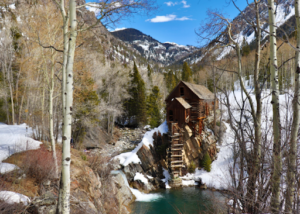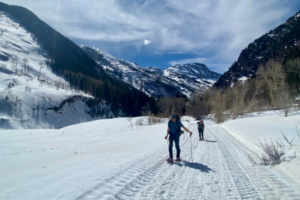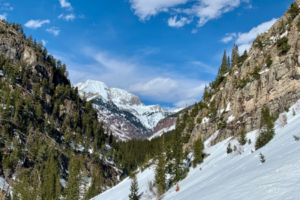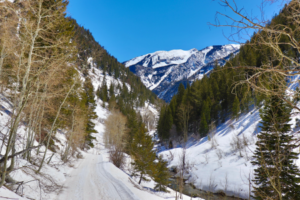During the 1960s and early 70s, developers obtained hundreds of acres of land with the intent of building a ski resort. They planned big, including 12 chairlifts, hotels, shops and restaurants. The plan bothered many of the local residents, so in an effort to keep Marble wild and secluded, they got together and in 1972 formed the Crystal Valley Environmental Protection Association. They had a goal of preventing the development of the Marble Ski Area and protecting the local environment as a whole. They had large hurdles to overcome, like the wealthy and powerful developers and bureaucrats who were more interested in profits than planet.
The project ran into issues; the land they had obtained was mostly south-facing and would get baked in the sun all day, there were hazards that prevented home sales, questions about the adequacy of water and sewage services, and a group of citizens that voiced their concerns whenever possible. The development plans never launched due to all of these troubles and allegations of illegal land sales. In the end, only one chairlift was ever built and it only operated for one season. The developers went bankrupt after two years, and the citizens’ group won that battle and has continued to fight for the environment and protect the Crystal River ever since. They are currently working on issues like the Coal Basin methane mitigation and helping find solutions to the overuse issues occurring from the off-road vehicles on the Lead King Loop.
- Historic Colorado mine
- Quarry Road approach
- Marble Colorado
- Quarry Road
Marble is known for its beauty in more ways than one. The Yule Marble Quarry is one of the biggest marble deposits known globally. It was founded in the 1870s and was the main source of profit for the town and it is still open today. Unlike most quarries, it is not an open pit mine; the marble deposits are found underground at 9,500’ of elevation, which means carving into steep mountainsides.
In 1941, operations stopped as there was no need for marble during the war, and since steel was in short supply, the mining equipment was stripped and sold off. The quarry reopened after 50 years, in 1990. Since then, ownership has changed hands many times. In 2010, Enrico Luciani bought the mine and began shipping marble to Italy, and to other countries in Europe and Asia. Today, it’s run by Colorado Stone Quarries.
Notably, the Lincoln Memorial in Washington D.C. was built out of marble from this quarry in 1914. In 1931, Yule Quarry marble was used to construct the Tomb of the Unknown Soldier in Arlington National Cemetery. A special type of marble called Calacatta Lincoln was first discovered in this quarry and is often considered to be the finest, in terms of both quality and purity, white marble on the planet.
To help keep Marble wild and with a heavy degree of solitude, we need to follow the rules in place that keep the businesses happy and keep everyone safe.
Let’s talk logistics. Parking and road access are important components to understand before booting up.
4WD or AWD is mandatory for driving the Quarry Road (County Road 3). Note that the road is narrow and mostly one lane, it is steep and can be slick from the snow and ice. Passing a quarry truck hauling marble is very difficult. To avoid this, stop at the quarry office at the beginning of the road to find out where the truck is. A pilot car precedes the truck on each run, if you see the car, they’ll ask you to pull over to let the truck pass, please do so.
The road crosses several avalanche paths, do not drive when the risk is high. There is zero opportunity for snowmobiling from Quarry Road. All terrain accessible from the road is considered advanced and has challenging avalanche terrain, there is nothing available here for beginners.




